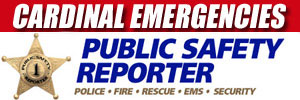While all firefighters share a goal of controlling and extinguishing fires, not all firefighters are the same. In the firefighting industry, there are several different types or categories of firefighters, each requiring specialized training and responsible for combating specific types of fires in distinct environments. The main types of firefighters include wildland firefighters, structural firefighters, and aircraft firefighters. To gain a better understanding of the duties and responsibilities of the different types of firefighters, check below.
Wildland firefighters
Wildland firefighters specialize in preventing, controlling, and extinguishing wildfires that occur in rugged, uncultivated areas such as woods or brush. In doing so, they help protect resources and natural wilderness as well as people who live in areas that border wildland areas.
Due to the unique challenges that wildland environments pose, wildland firefighting requires specialized equipment, techniques, and training different from firefighting that occurs in more populated areas. However, because some wildland areas may occur close to populated locations, wildland firefighters are also trained in the basics of structural firefighting in case the fire spreads to nearby homes. In addition to extinguishing fires, wildland firefighters may also rescue and provide medical aid to victims trapped in fire areas, perform forest maintenance tasks, and conduct fire safety education programs.
Structural firefighters
Perhaps the most widely known type of firefighters are the firefighters you see almost every day in cities — structural firefighters. A structural fire is a fire that takes place in the structural components of a commercial, residential, or industrial building, such as a factory fire or a house fire. When such fires occur, structural firefighters extinguish the fires using either interior or exterior resources or a combination of both. Often, structural firefighters will be divided into small companies of three to five crew to combat fires. Extra alarm fire uses many more crews and relief crews.
The two types of structural firefighting companies are engine companies and ladder companies that work together to fight structural fires. While engine companies are responsible for finding the source of the fire and extinguishing with a water supply that they bring to the fire or pump from a fire hydrant, ladder companies are more likely to rescue people inside structures with use of ladders to rescue people from the outside. They are also more likely to be on the roof ventilating the building or pulling down ceiling to find hidden fire, or to get other ventilation assignments. Both crews are responsible for fire overhaul, but in some departments ladder company crews or ‘truckies’ are more likely to get the overhaul assignment.
Aircraft firefighters
Aircraft firefighters specialize in extinguishing fires that occur on planes and other aircraft. Aircraft firefighters are necessary for airports where they respond to the unique situation created by a plane crash or a fire onboard the aircraft. Aircraft firefighters must know how to control substantial fuel fires that often result when an aircraft burn. To do so, firefighters often use firefighting foam with Aircraft Rescue and Firefighting (ARFF) vehicles rather than water to help smother the blaze, as water spreads liquid fuel fires. Furthermore, the confined space where aircraft fires take place requires specialized training and unique firefighting methods.
facebook …
GET ALERTS on Facebook.com/CardinalEmergencies
GET ALERTS on Facebook.com/ArlingtonCardinal
Stay informed with news from PublicSafetyReporter.com’s Emergencies Behind the Scenes Facebook page — Facebook.com/CardinalEmergencies.

